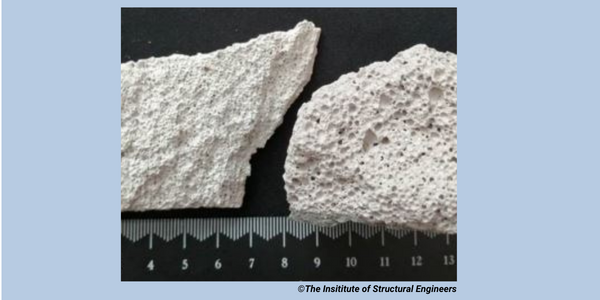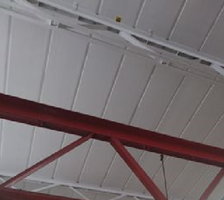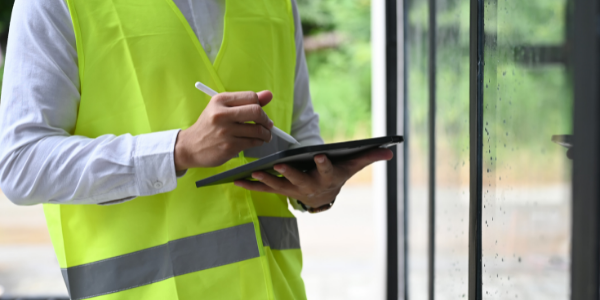RAAC in Social Housing – keeping residents safe
‘Ensuring the safety of tenants and residents should be the highest priority for every Social landlord’.* While the RSH considers Reinforced Autoclaved Aerated Concrete (RAAC) is not widespread in social housing, landlords are expected to know where RAAC is present and its condition.

This Bulletin will help landlords check, identify and manage RAAC in their stock so they can keep their residents safe.
How to check for RAAC?
Many landlords start with a Desktop study to check which buildings might have RAAC based on:
- Age – built between mid-1950s and mid-1990s (IStructE 1 September 2023). RAAC may be present in a small number of buildings dating from this period particularly in flat roofs and panel structures (RSH letter), typically non-trad construction and those with larger spans.
- Non-domestic ancillary buildings i.e., storage areas, community rooms etc.
- Building records, such as maintenance records of remedial works (such as re-roofing of flat roofs and any contractor or surveyor notes), BIM/Golden thread for structural integrity of HRRBs, FRAs & FRAEWs, original construction drawings (check Local Authority drainage and Building Control records). Landlords can use information they are being required to collect of the construction and condition of their stock to comply with Building and Fire Safety Regulations. One landlord is exploring whether it can adapt FRA and FRAEW inspections to assess for RAAC. Another is adding RAAC to this year’s Cornish unit testing programme.
- Establishing a list of properties that could contain RAAC that require further investigation. Some landlords are establishing a hierarchy to guide this, starting with flat roofs with a history of leaks, size of blocks (larger ones first), individual houses where there have been roof leaks and then those where there are no records of roof leaks.
If RAAC is suspected – how can landlords identify it?
- Start with a visual inspection to check if the desktop study suggests RAAC could have been used. Dept of Education Guidance explains RAAC panels are most commonly found in flat roofs, but may also be found in pitched roofs, floors, or walls. They are light-grey or white in appearance, and the underside of the panels will appear smooth (if the surface of the panels is visible). Unlike traditional concrete, there will not be visible stones (aggregate) in the panels and where visible, the inside of the planks will appear bubbly, often described as looking like an Aero bar. Where planks are not visible, i.e., have a surface covering or behind ceilings or finishes, landlords should consult HSE guidance Managing my asbestos.
- Where Physical inspection, including opening up, is required to confirm RAAC and its condition, THIS SHOULD NOT BE DONE BEFORE THE ASBESTOS REGISTER IS CHECKED. Asbestos registers and survey information must be used to verify if any surface covering, coating, or debris is present to the RAAC panels and whether it contains asbestos. iON consultants have advised that similar asbestos cement moulded sheets can present in a similar way to RAAC (see image below) and equally there could be sprayed or textured coatings present for fire proofing or decorative purposes, which may be intact or present as residue from previous asbestos removal works. Therefore, caution should be taken when assessing RAAC to establish likely asbestos content and understand if additional controls are required before undertaking any structural assessments.

- Testing samples should be based on the advice of a competent structural engineer. The Institution of Structural Engineers (IStructE) has published ‘RAAC Investigation and assessment IStructE March 2022’ and ‘RAAC Investigation and Assessment – Further Guidance IStructE April 2023’ on how to inspect and assess any RAAC construction.
How should landlords to manage RAAC?
The Institution has suggested steps for building owners/managers on ‘Managing structures with RAAC’ with building owners/managers who are responsible for the safety of buildings to follow. Once it has been has established that RAAC has been used, the building needs to be assessed to understand what, if any, risk there is and if any immediate temporary remedial work is required. To help with this, there is a list of IStructE Chartered and Incorporated-Members who have self-declared they have experience of RAAC. Competent structural engineers will be needed to evaluate all the information (including a detailed site inspection) and propose any necessary remedial works.
In addition, landlords should keep records showing how they have checked, identified, and are managing RAAC to ensure their residents are safe in those buildings. These records can be used inform and reassure residents that any risks are being managed.
While not directly applicable, the Dept of Education has published guidance on ‘Reinforced Autoclaved Aerated Concrete (RAAC)’, to which landlords can also refer.
Where can landlords find further guidance?
- RSH Letter
- IStructE statement: Reinforced Autoclaved Aerated Concrete (RAAC)
- Reinforced Autoclaved Aerated Concrete planks (RAACs)
- RAAC Investigation and assessment IStructE March 2022
- RAAC Investigation and Assessment – Further Guidance IStructE April 2023
- Reinforced autoclaved aerated concrete: identification guidance
- Reinforced Autoclaved Aerated Concrete (RAAC): Identification guidance
- Guidance for responsible bodies and education settings with confirmed RAAC in their buildings
- NHF RAAC Update for members
- Anthony Collins briefing: The social housing sector and RAAC
__________________________________________________________________________________________


